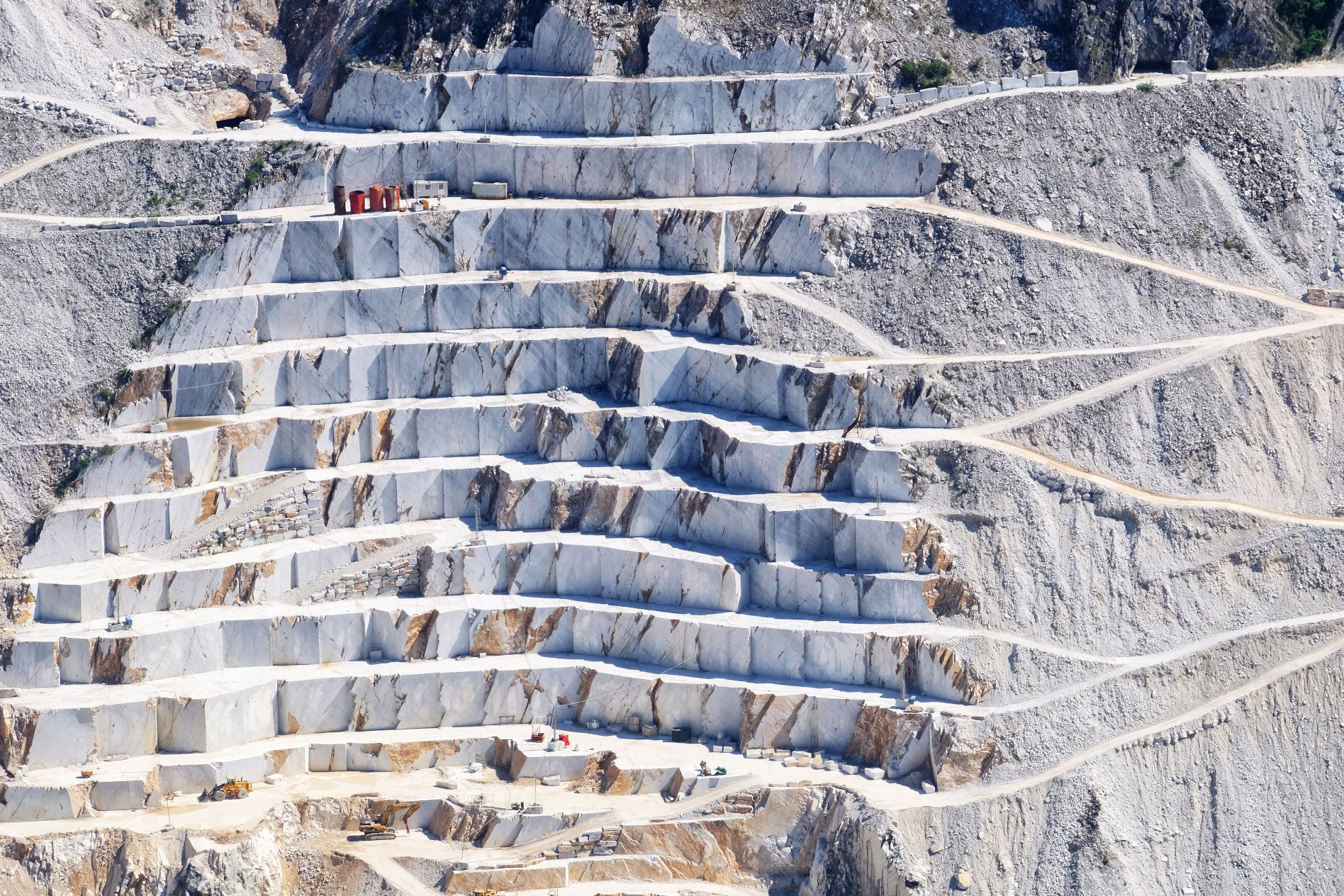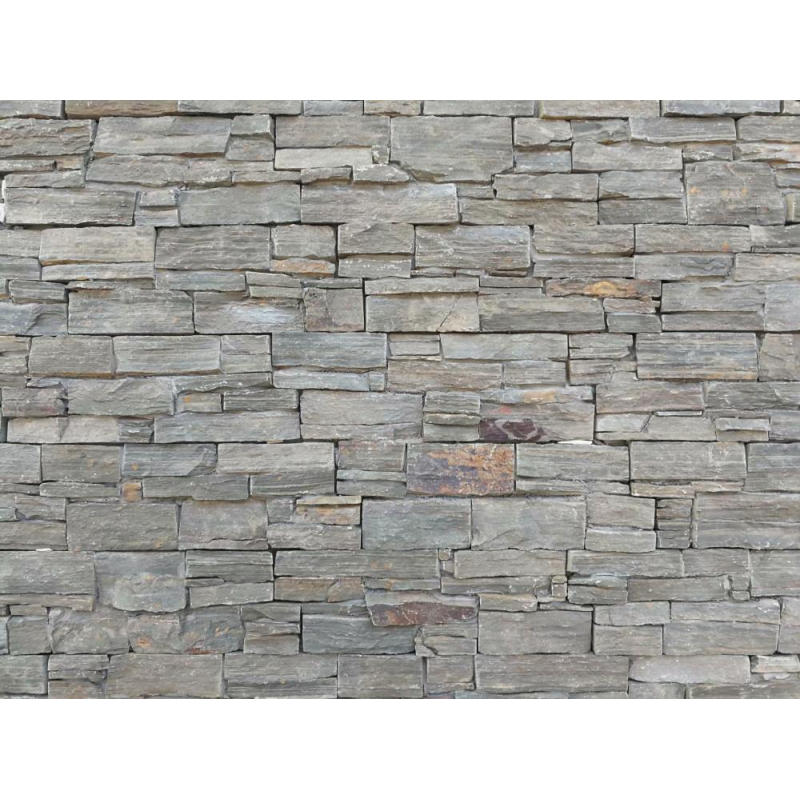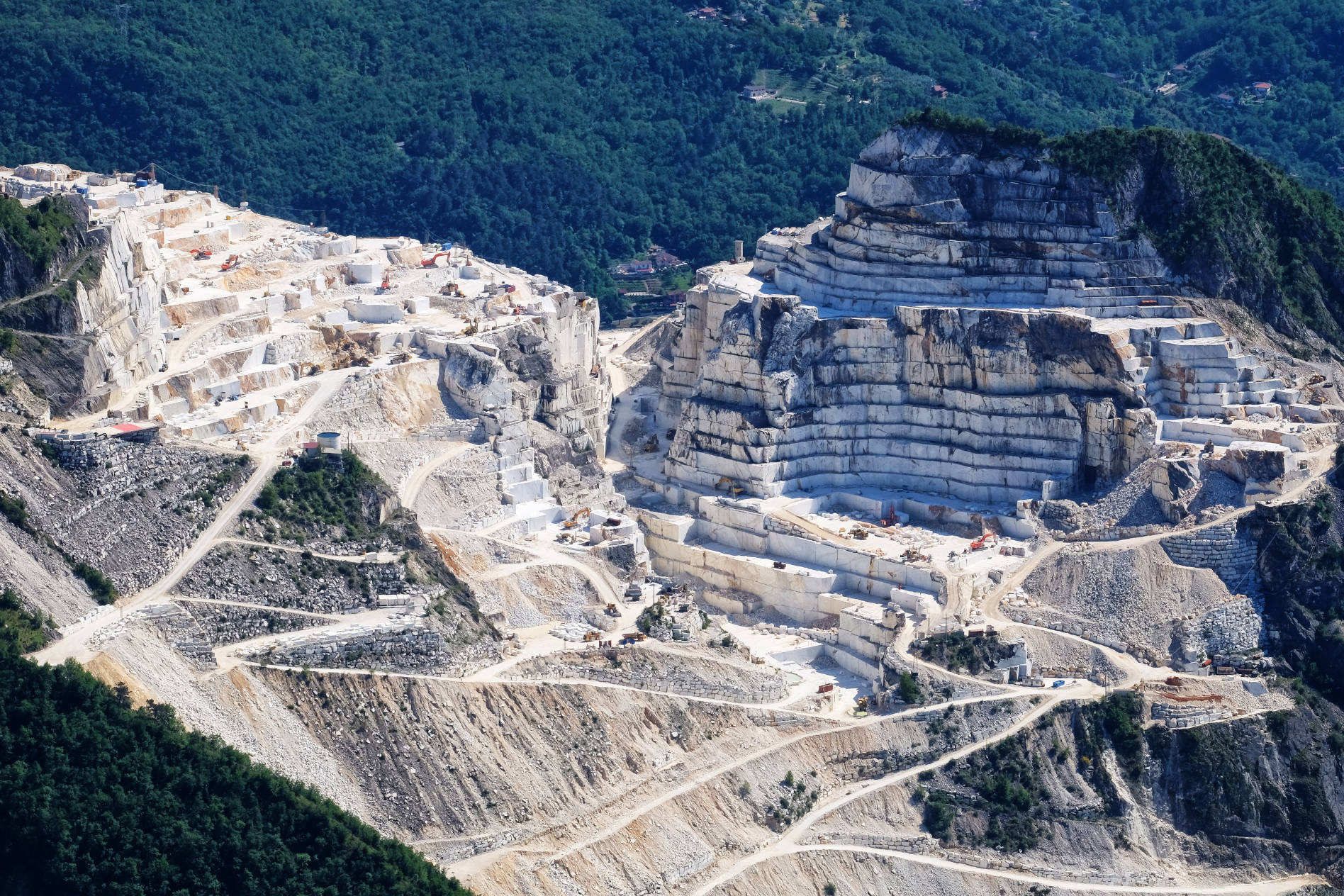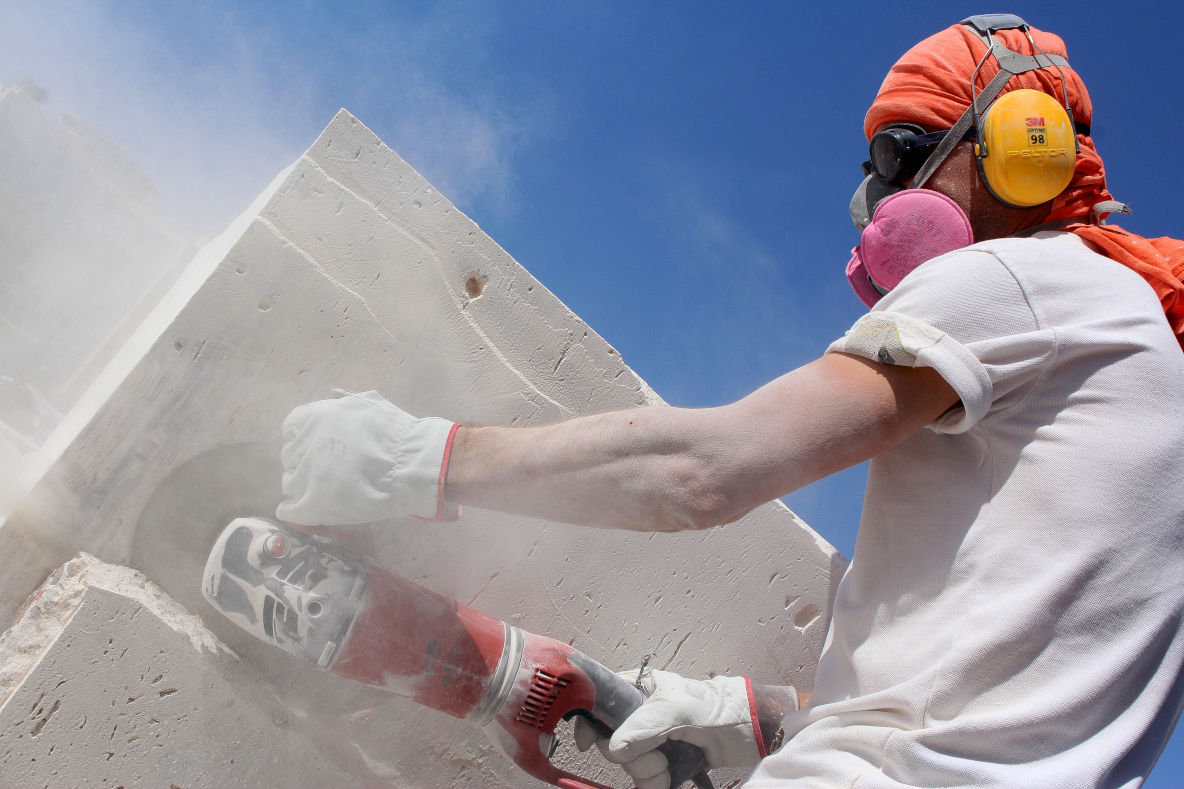

When you stop to think about it, natural stone forms the basis of our modern civilization in a big way. From the buildings we live, work and shop in to the ground we walk and drive on, living without this essential natural resource is difficult to imagine.
The journey that the various forms of natural stone take from the depths of the earth and into the construction of homes, commercial buildings and roads is a fascinating one. Let us dive in and explore the origins of natural stone and how it’s made.

Natural stone can be categorized in three ways: Igneous, Sedimentary and Metamorphic.
Igneous rocks are the result of magma or lava solidifying and cooling, either beneath the earth’s surface or ejected from volcanoes and left to cool above-ground. Granite is the most common form of igneous stone but other kinds include basalt, dunite, rhyolite and gabbro.
Sedimentary rocks form through a combination of fragments from other rocks, along with the remains of plants, animals and other organic materials. These materials accumulate in deserts, oceans and lakes before they are compressed into their final form by the weight of the earth above them. Limestone is the most common sedimentary rock with siltstone, dolomite and shale comprising other variations.
Metamorphic rocks previously existed as igneous or sedimentary stones and were then transformed due to heat and pressure applied through exposure to magma, the weight of earth above them when buried deep underground, or a combination of both. Marble is the most famous stone of the metamorphic variety and quartzite, soapstone, gneiss and jade, among others, round out this fascinating category.

Marble Quarry in Tuscany
After nature takes care of the first step in actually forming the stone, the next step of removing and re-purposing the stone for use is done by human hands at stone quarries all over the world.
The process of quarrying stone is extensive and requires powerful machinery along with skilled quarry workers. Before the stone can even be touched, there is a long list of actions that need to take place.
Firstly, a team of geologists must find stone outcrops at a quarry that can be examined. Next, a sample of the stone is taken by drilling into the rock with diamond-tipped drill bits. The sample is then analyzed to discover if it has the desired characteristics to be used as a building material.
Assuming the stone fits the bill for construction purposes, the lengthy and often drawn-out process of attaining the proper licences and permits from the local government begins. Depending on the country and state, this can take years to reach completion.
Once the final approval is handed down, work begins clearing any debris, dirt and other obstacles that would otherwise impede the quarrying process. Adding to this difficulty is the fact that many quarries lie in remote and inaccessible areas, requiring entire roads and tunnels to be built before the real work can start.
A combination of diamond-wire saws, high-powered torches and timed explosive detonations are used to separate the stones from the face of the quarry. The resulting massive blocks, which often weigh upwards of forty tons, are then transported to a facility for further cutting and processing.

Quarry Worker Cutting Stone
At the processing facility, the stone blocks are then cut into slabs by high-speed gang saws that also release water while cutting to reduce the emission of dust. Despite the speed at which they operate, the gang saws typically take around two days to finish cutting a 20-ton block of stone.
Next, the slabs are sent through a polishing machine to give the desired finish. Polished is the most common finish with honed, leathered and brushed being other options that provide different degrees of texture on the surface of the stone.
Now that the slabs are cut to the correct size and have the desired finish, the final stage in a natural stone’s journey into your home takes place at the fabricator’s facility. Here, the stone slabs are further cut to specification for each individual project which includes shaping of the edges into the detail required for installation.
Now that you know the incredible journey that natural stone takes from deep inside the earth and into your kitchen, I’m sure you’ll agree that it is certainly worth the wait. Thanks to advancements in the industry over the years and the demand that exists for natural stone of all kinds, you don’t actually have to sit around while your marble, quartzite or granite is quarried and processed.